Funded on Kickstarter on June 2015, Omnia: The First is the first part of the Omnia Series, inspired by ancient symbology and traditional playing cards.
It’s designed by Giovanni Meroni and proudly printed by Expert Playing Cards Co. with Master Finish.
There are 3 decks of Omnia: The First:
- Omnia Oscura, gold foil on black stock
- Omnia Illumina, gold foil on white stock
- Omnia Suprema (Limited Edition), red foil on black stock
All version have different tuckboxes, faces and back.
Features:
- 100% Illustrated courts, aces and jokers
- Custom pips
- Classic intricate & clean design with perfect symmetry
- Metallic inks on cards
- Based on classic playing cards
- Beautiful queens
- Foiled tuck box, both inside and outside
- Every deck includes an extra Queen of Hearts with a special background
An explanation on the main theme
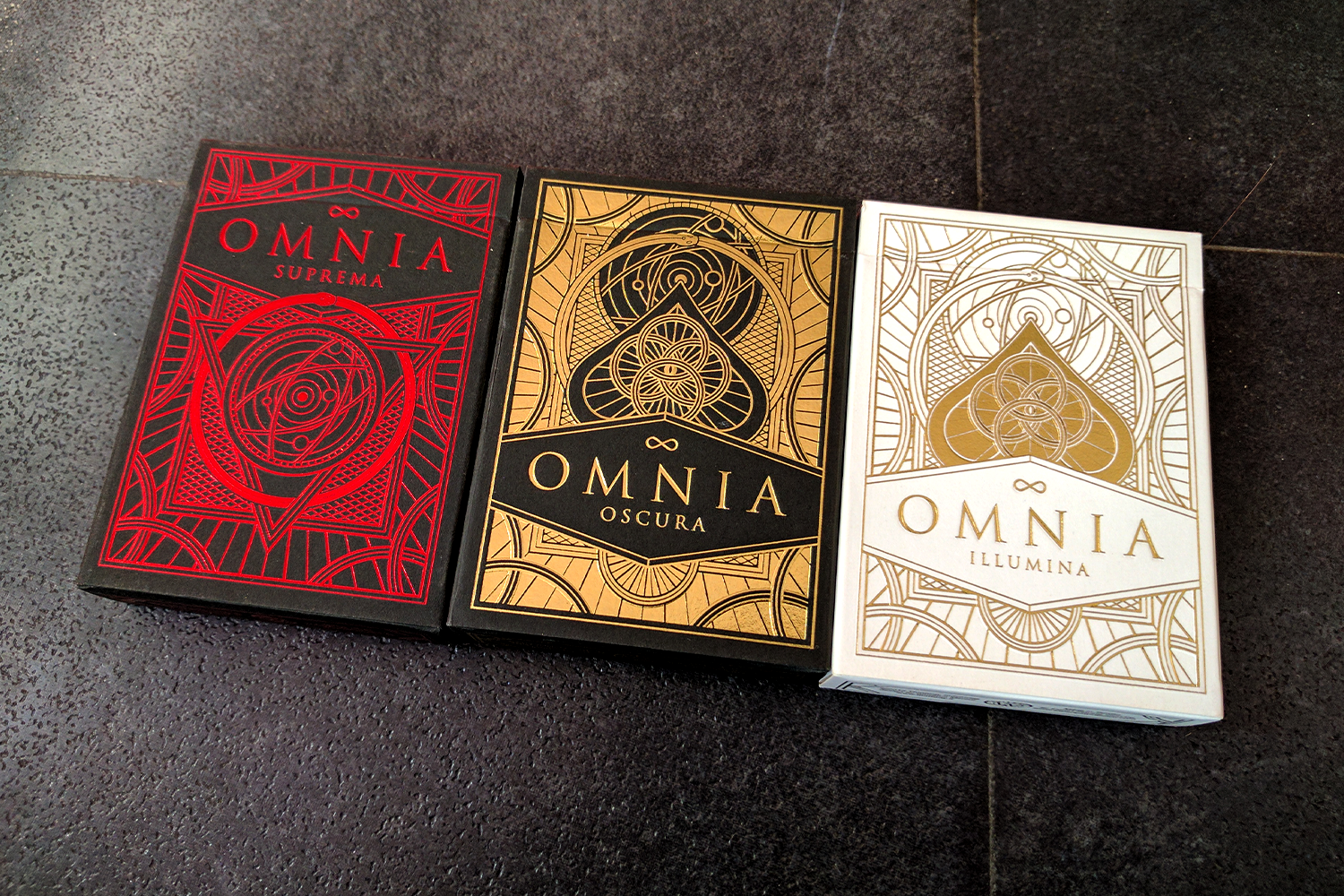
The main Omnia theme is cyclicality, especially in the sense of something constantly re-creating itself, the eternal return. The main symbol is the Uroboros, the immortal God-snake who eats its own tail, represents the beginning and the end of time.
There are three different Omnia decks, and every deck represents a dimensional plane in the Omnia Universe. Oscura is the dark side, Illumina the bright one and Suprema is the plane where the Gods live.
Every court live a different reincarnation in each deck: in Oscura their soul is more dark, they are more malicious, angry or sad. In Illumina they are much more happy, brave and generous. In Suprema they are ascended to Divine, and show their power with elaborate armors, jewels and wings. Think every deck as a different mirror, who reflects every Omnia court with a different soul.
Some symbology
The Ankh was the ancient Egyptian hieroglyphic character that read “life”. It represents the concept of eternal life, and the Egyptian Gods are often portrayed carrying it by its loop.
The Ibis was an object of religious veneration in ancient Egypt, particularly associated with the deity Thoth. He is responsible for writing, mathematics, measurement and time as well as the moon and magic.
Anubis is the Greek name of a jackal-headed god associated with mummification and the afterlife in ancient Egyptian religion.
The Philosopher’s Stone is a legendary alchemical substance said to be capable of turning base metals such as lead into gold.
Odin is the chief god of the Norse pantheon. He gave one of his eyes for the price of wisdom, and usually disguise himself as an old man. He uses a legendary spear, Gungnir.
Freya is a goddess associated with love, sexuality, beauty, fertility, gold and death. She and Odin are the Omnia Suprema Jokers.
Janus is the god of beginnings and transitions,and thereby of gates, doors, doorways, passages and endings. He is usually depicted as having two faces, since he looks to the future and to the past.
Fortuna was the goddess of fortune and personification of luck in Roman religion. She might bring good luck or bad: she could be represented as veiled and blind, as in modern depictions of Justice, and came to represent life’s capriciousness.
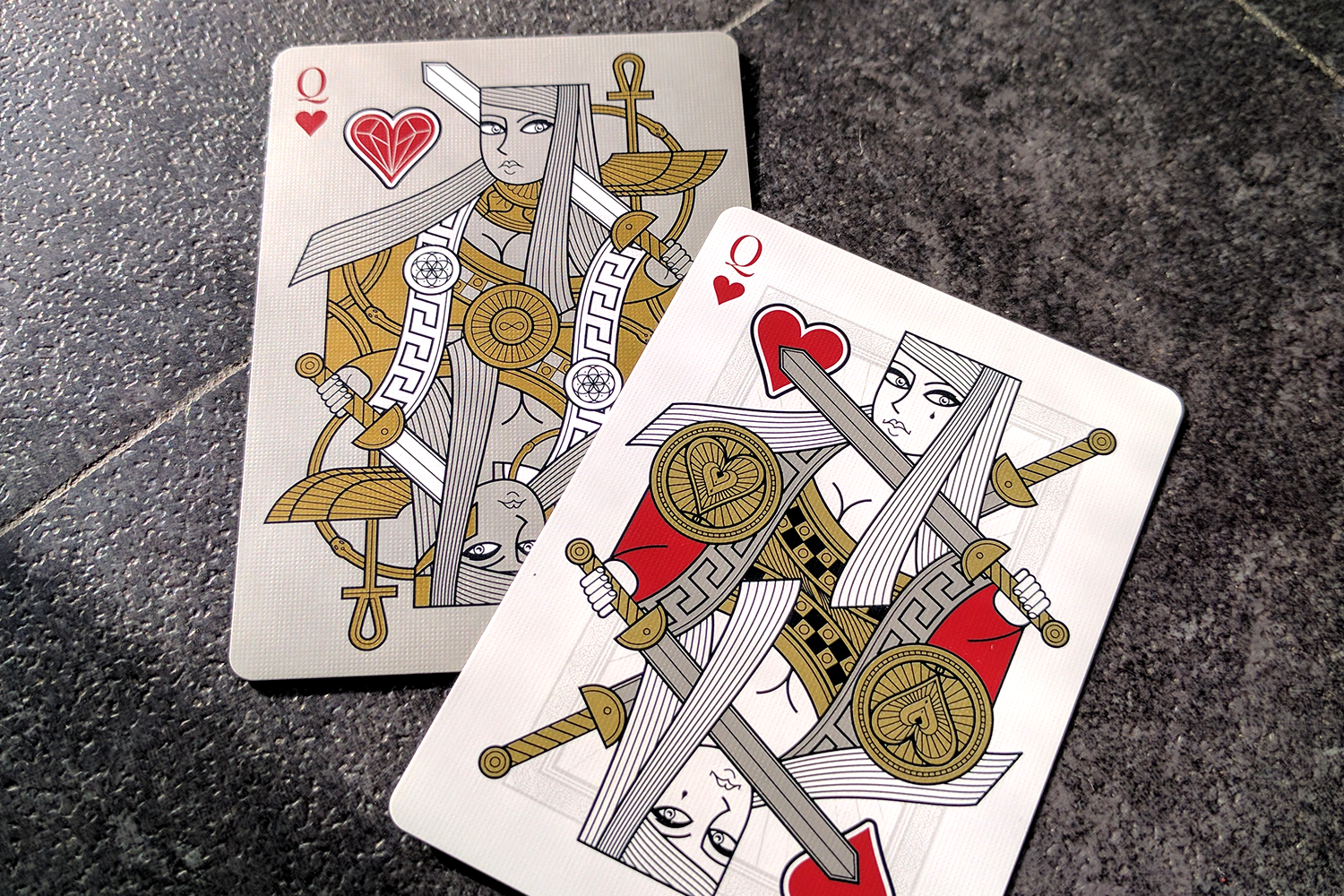
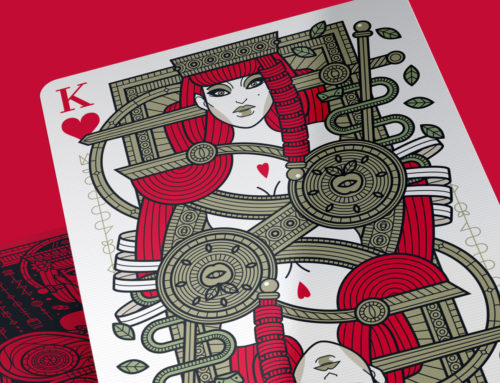
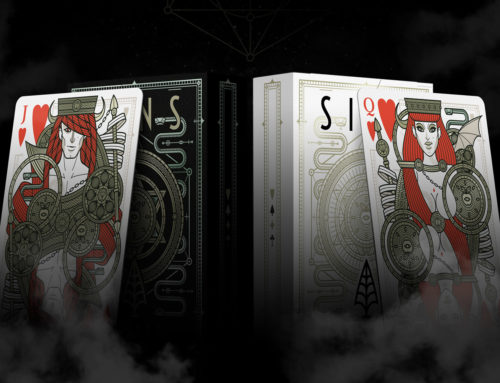
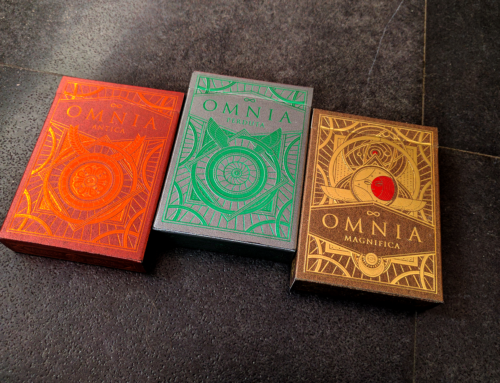
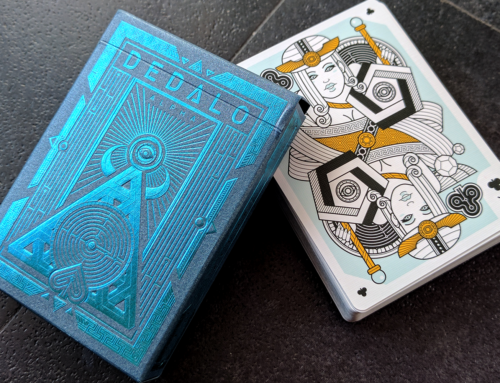
Leave A Comment
You must be logged in to post a comment.